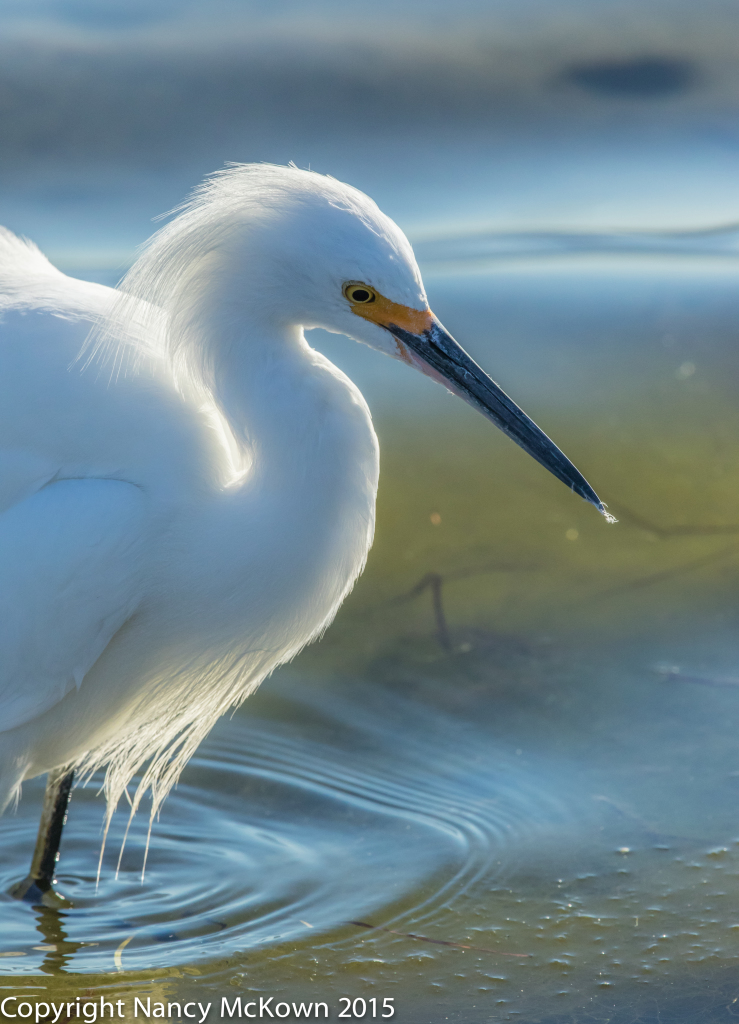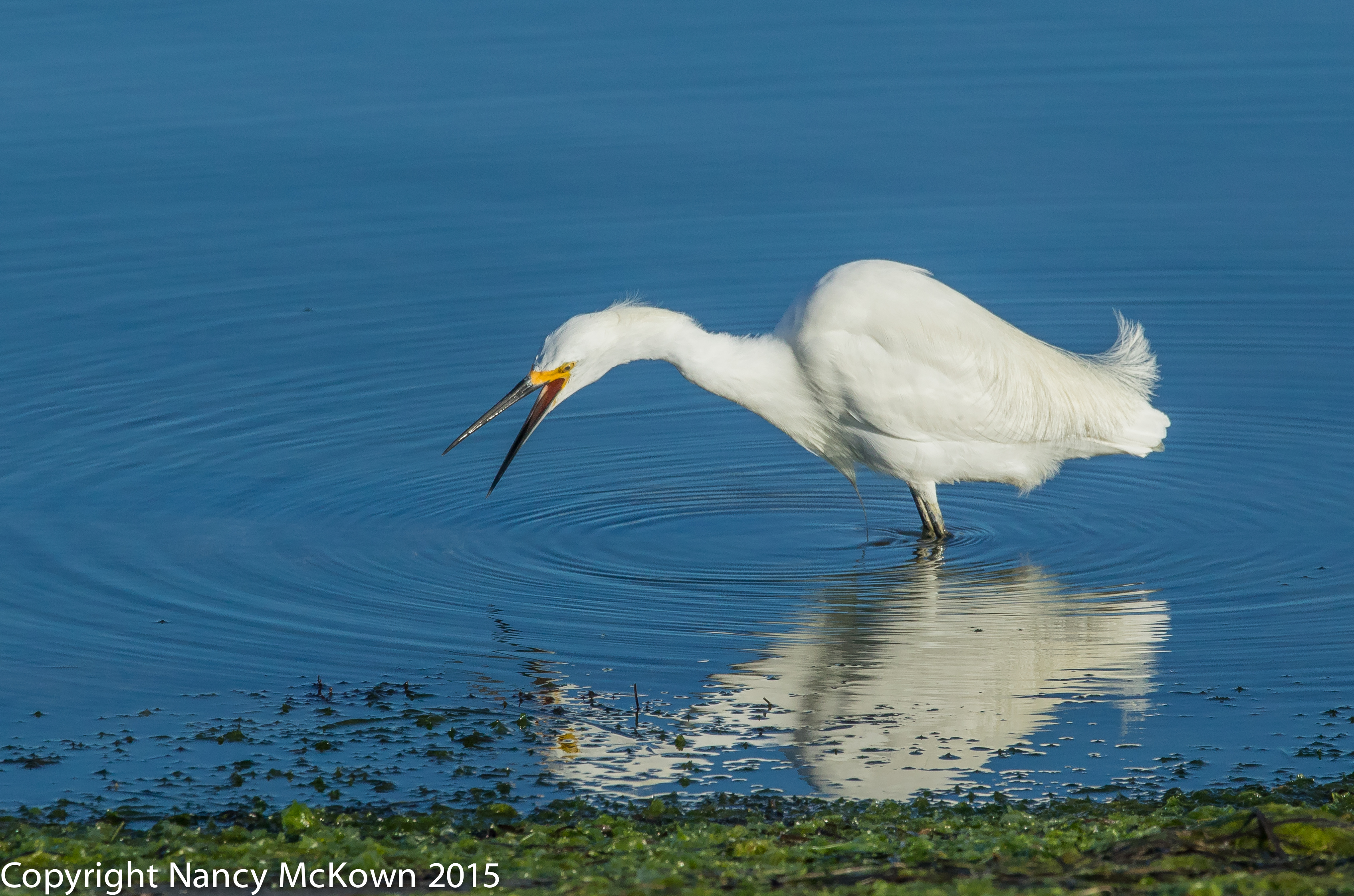Side Lighting
There’s nothing quite so gratifying as photographing a bird at eye level and being able to play with how the light strikes its feathers. I assembled my 7D Mark II with a 300mm f/2.8L lens and 1.4 x III telephoto extender and went for a walk on a Southern California beach in search of a Snowy Egret. I spotted one almost immediately foraging in the shallow water.
I walked slowly toward him, as close as I dared. The morning sun was low in the eastern sky and to the right of the camera. The soft illumination was spreading unevenly over the Egret, and consequently, textures, shapes, patterns, and contours were more emphasized. I set my exposure manually and started shooting.
Camera Gear for Beach Walking
The advantages of taking this camera gear with me for a walk on the beach are as follows:
- The Canon 300 mm f/2.8 L lens is an extremely sharp prime lens that focuses fast and has a wide aperture.
- The 300mm lens is fairly light (5.17lbs), responds fast in low light and produces outstanding background blur.
- The Canon 1.4x III telephoto extender is compatible with this lens and extends the 300mm focal reach to a 420 mm.(300 x 1.4)
- Multiply in the extra reach afforded by the 1.6 cropped sensor in the 7D Mark II (420 x 1.6) and I have a reach of 672 mm with a f/4.0 aperture. (Remember the technical tradeoffs that come with attaching the 1.4 telephoto extender: the max aperture is reduced by one stop, focusing speed is slower and sharpness will be slightly decreased.)
- No tripod is needed with the 300 mm/1.4x extender combo. (NOTE: I find that my 500mm 4.0L lens is too heavy to comfortably walk around with, especially on the beach. It is also difficult for me to prop up the 500mm and hold it steady when it is time to aim and shoot.)

ISO1000; f/9; 1/2000 Second
Ethereal Qualities
While on the beach, I noticed the intriguing light, but did not register its surreal qualities or how eerily it painted itself on the Egret or the water in the background. My focus was on photographing this captivating bird. The unearthliness created by the light was all around me, and I missed it, at least until I saw it that evening in Lightroom.
What I missed is illustrated in this close-up photo of the Snowy Egret. It depicts a tranquil, almost spiritual place. The dreamy quality of the flowing water in the background gives the photo an impressionist flair, the illusion that this photo is a painting. The wet feathers on his head and breast appear to have a silky, tactile quality. The soft glow illuminating the back side of the Egret’s white head and long neck contrasts nicely with the strikingly placid background. Why didn’t I notice (and enjoy) the ethereal qualities of the light at the time I was taking the photograph?
It’s pretty clear that I need to stop being all cozy and comfortable with my bird photography. My photos would be better if I am more aware and purposeful with light – think more about what it is I want to create, and try to pay attention to when and how natural light paints exquisite dreamlike qualities on its canvas.
That takes being at the right place at the right time to a whole different level.
(See this post about photographing birds on or near water).









